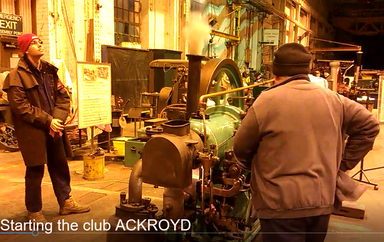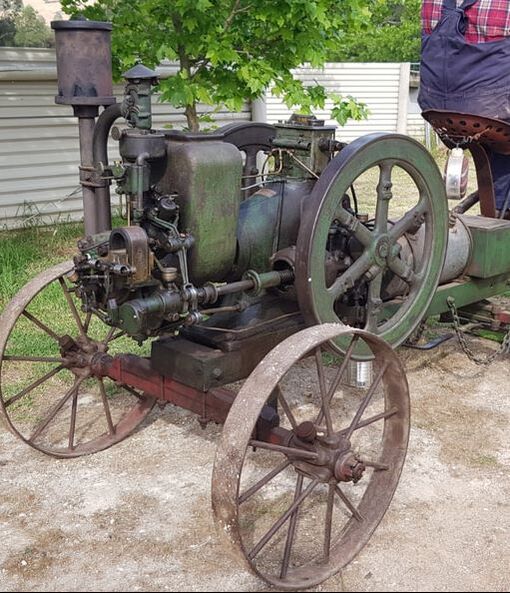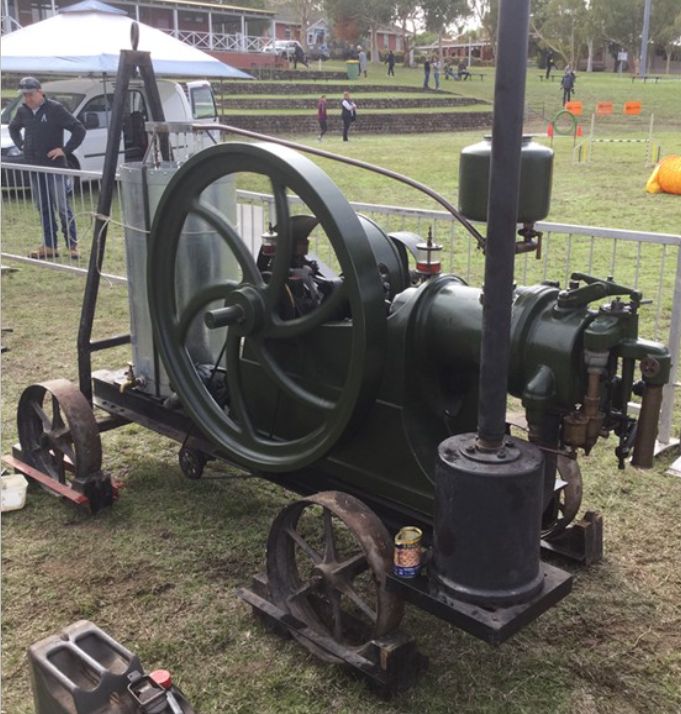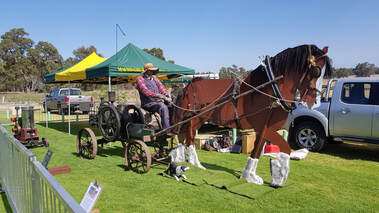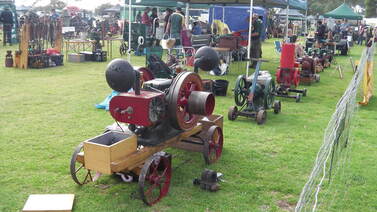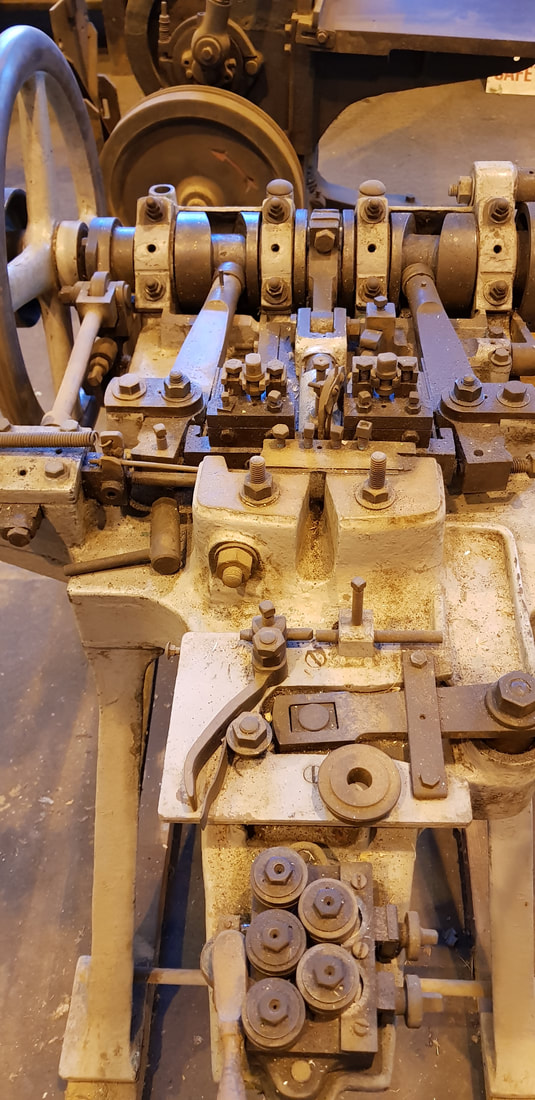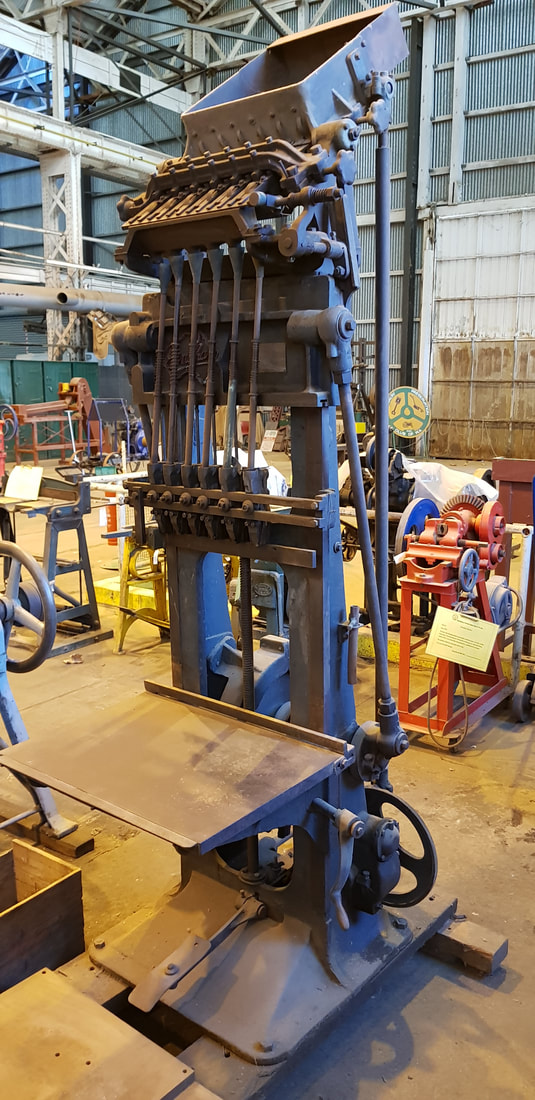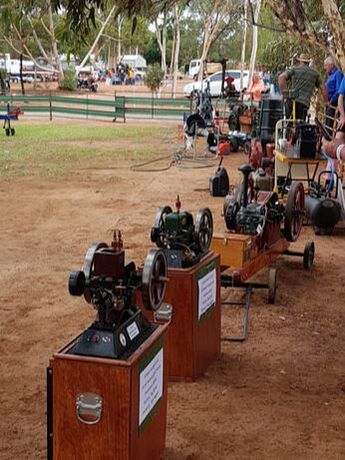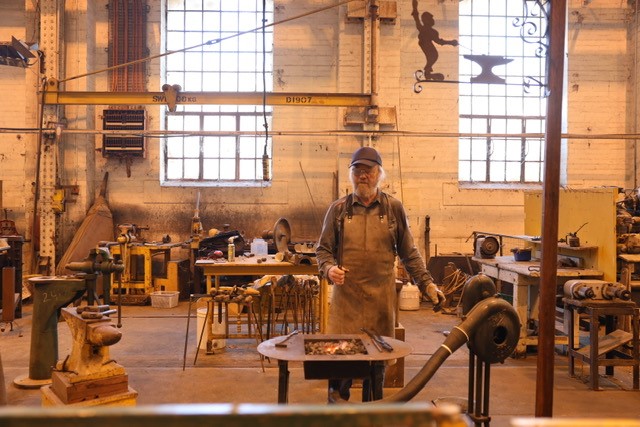PICTURES, VIDEOS, SLIDE SHOWS OF MACHINERY TYPES ASSOCIATED WITH CLUB ACTIVITIES
How stationary engines were utilised in the past, before electrical tools became readily available.
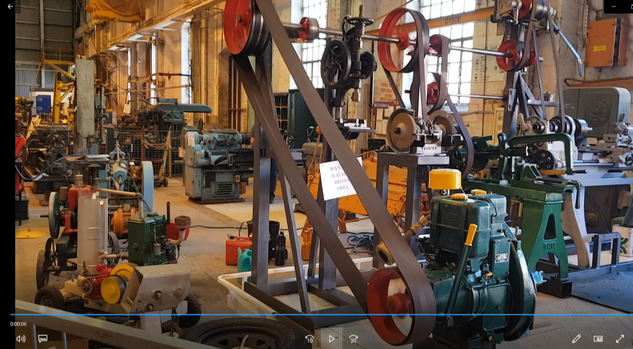
This exhibit demonstrates the application of a
stationary engine powering tools as was done in
days gone by.
The green stationary engine illustrated is driving a
belt-shaft which in turn is powering a Drill, Grind-
stone, sheep shearing equipment, metal Hack-Saw
and a Lathe by belts.
These belt driven systems were universally
employed on farms, in mills and in factories.
Check out the video below.

